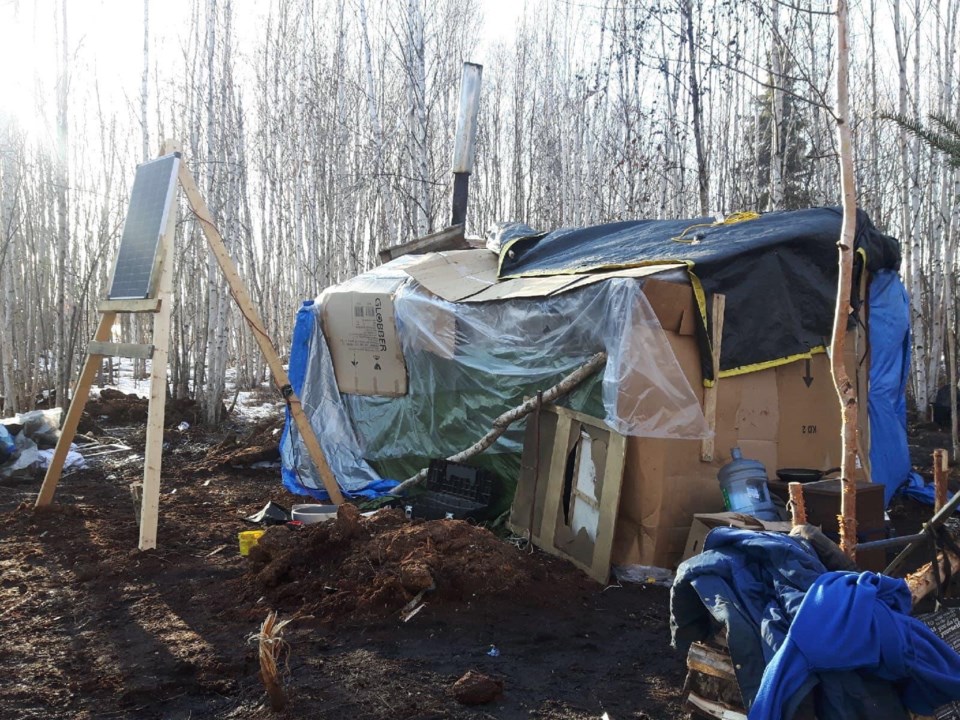LAC LA BICHE — Lac La Biche County administrators have created and released an itemized list of to-date costs, related not only to the beginnings of the Bonesville encampment project, but the costs associated with the dismantling of previous homeless encampments in 2020 and 2021.
In an effort to understand the financial implications of homelessness and the impact of municipal expenditures when responding to incidences involving homeless individuals, council requested a high-level itemized accountability report be made.
The report released publicly on Aug. 3, showed that the County has paid approximately $58,683.57 from the beginning of 2020 to the present date.
The total costs presented by the report only reflect amounts paid through County operations. They do not include the damage to private and community property or amounts spent by community services, such as health services, ambulance, RCMP and other community agencies.
In 2020, Protective and Enforcement Services spent a combined total of 391 staffing hours dealing with complaints, concerns and clean-up related to previous homeless camps, which translates to a cost of approximately $29,570.
So far, costs for Protective and Enforcement Services spent following up on complaints, concerns and clean-up, resulted in a combined total of 215 manhours and an approximate cost of $23,600 for the County, in 2021.
During the two-year period, Protective Services responded to 15 incidences that have included 30 apparatus responses, which refers to the deployment of a Protective Services vehicle or other emergency equipment.
Between 2020 and 2021 Family and Community Support Services (FFCSS) has provided wellness check-ins and distributed limited supplies to the homeless camp at an estimate cost of $1,000 in staff hours, and $1,513.57 for limited supplies. Portage College students donated $500 to offset the costs for these wellness checks and supplies.
When presenting the report, Darrell Lessmeister, the County’s associate CAO of recreation and family services said, “You can see in (the report), in keeping people homeless it definitely is more costly than actually providing transitional housing and providing homes so that you can have people work through their issues and become a strong community by doing that.”
He added, “Not doing anything is costing us, and we could do something, so that it actually becomes less costly for the community and for our services.”
Also included in the report was research carried out by Calgary Homeless Foundation in 2008 that stated in Alberta, “The annual costs to supports (including health care, housing, emergency services) are calculated to be $72,444 for people who are transiently homeless, while the cost of chronic homelessness is $134,642 per person.”
With the information and numbers gathered by administration, Coun. Colin Cote says, council now has a starting point to measure progress moving forward.
“(The report) brings to light that the fact that doing nothing can actually cost more than doing something, and doing nothing gives the exact same result — nothing,” said Cote.
Working towards ending homelessness
Over the next year, the County has agreed to contribute $60,000 to a homeless encampment project.
To date, the lease agreement between Lac La Biche County and Métis Nation Region 1, with legal review, was estimated to cost $3,000.
The goal of the project is to reduce the prevalence of chronic homelessness in Lac La Biche County, which is defined by the report as “episodes of homelessness that typically become more entrenched and ingrained in people’s daily lives due to their long duration, which may be continuous or episodic. Those who are in this category are typically an older population who have experienced long-term unemployment and are more likely to suffer from disabilities, metal and physical health problems, and addictions.”
Concluding the presentation, Anita Polturak, the manager of FCSS told council, “When it gets into the longer-term, mental illness starts to deteriorate and a higher level of services is needed then,” suggesting that early intervention is key.



